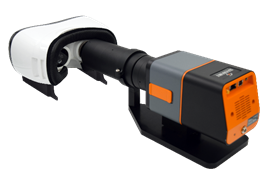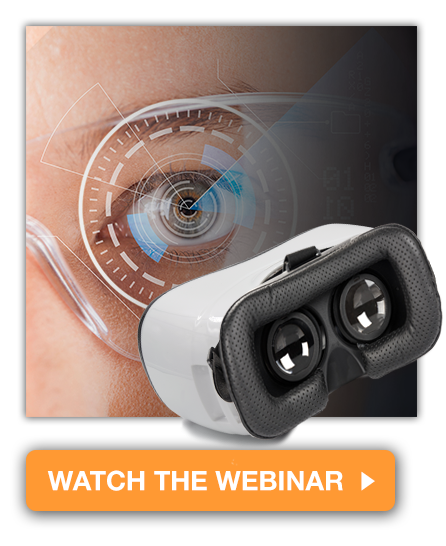Putting a Little More "Reality" into Virtual Reality
The power of virtual reality lies in the immersive nature of the viewer experience. With a VR headset on, you see only the images presented in front of your eyes. When the technology is well designed and executed, our brains read the images as reality and our experience becomes the world presented on screen.
If the technology is not functioning well, however, it not only distracts from the experience, but can even make the user temporarily ill. For example, latency of projected images—for even a few microseconds—can cause nausea and dizziness. A seamless experience, free from motion sickness, depends not only on the hardware, but also on the production of VR content and images, challenging headset manufacturers and content developers alike.
VR makers are working continuously to improve the technology of headsets and wearable devices to eliminate issues like nausea and distraction and produce applications that deliver a fully immersive experience. To that end, the emerging technology of light fields has the VR world very excited.
Essentially, a light field display allows the view of a VR projection to shift as you move your head, giving the appearance of three-dimensionality and more closely replicating real life. For example, a user can focus on objects that are “near” and “far” in the image in the same way they would in real life. To create this sense of dimensional reality, each pixel in the headset displays multiple colors, depending on the user’s viewpoint. The approach is called light “field” because (during filming) each pixel in the source camera must capture the light that’s striking from all directions (360°).
A demonstration of light field technology and the improved realism it can produce.
Though light field technology has been a topic of research and exploration in computer graphics for over 30 years, it was not possible to deliver high-quality light field experiences until today’s more practical camera, imaging, and display systems had been developed. Finally, it looks like light field’s time may be coming. Google recently released an experimental application based on light field technology that offers a virtual tour of the space shuttle Discovery. It was created using GoPro cameras configured in a 360° array, as seen below.

Google’s light field rig in the space shuttle Discovery. Source: Google
One of the challenges with light field VR, however, is that incorporating all that pixel-level detail demands extremely high-resolution displays, which in turn demand high bandwidth. Keep an eye on continuing development in this field (pun intended) to see how VR display makers tackle these challenges in bringing light field technology to the forefront.
Measuring Pixel Performance in the Most Pixel-Dense Displays
To provide the immersive experience users expect from VR displays, manufacturers must employ rigorous testing and quality control. When displays are viewed near to the eye (i.e., those displays aptly named “near-eye displays,” or NEDs) like in VR headsets, AR glasses, and helmet-mounted displays, every pixel counts. Understanding the demand, engineers at Radiant developed a wide-field-of-view AR/VR lens that attaches to our high-resolution imaging systems, which can evaluate the performance of NEDs at the pixel and sub-pixel level. Its unique design replicates the full field of view of a human user, offering an efficient, turn-key method of measuring AR, VR, and other near-eye displays.

Mounted to a ProMetric® imaging photometer or colorimeter, the AR/VR lens can capture all relevant display characteristics in a matter of seconds, applying selected tests from Radiant TrueTest™ Software to a single image captured by the camera for near-instant, comprehensive analysis. Standard tests in TrueTest include luminance, chromaticity, contrast, uniformity, mura (blemishes), pixel and line defects, and more. Unique tests for AR/VR display analysis also available in our TT-ARVR™ software module include:
- Modulation transfer function (MTF) to evaluate image clarity, based on Slant Edge Contrast as described in ISO 12233.
- Image Distortion (for characterizing distortion of the projected image)
- Image Retention/Sticking
- Factory distortion calibration of the lens solution to normalize wide-field-of-view images for testing
- Spatial x,y position reported in degrees (°)
To learn more about the advantages of the Radiant AR/VR lens for NED testing, view our webinar: “Replicating Human Vision for Accurate Testing of AR/VR Displays.”

Join Mailing List
Stay up to date on our latest products, blog content, and events.
Join our Mailing List
